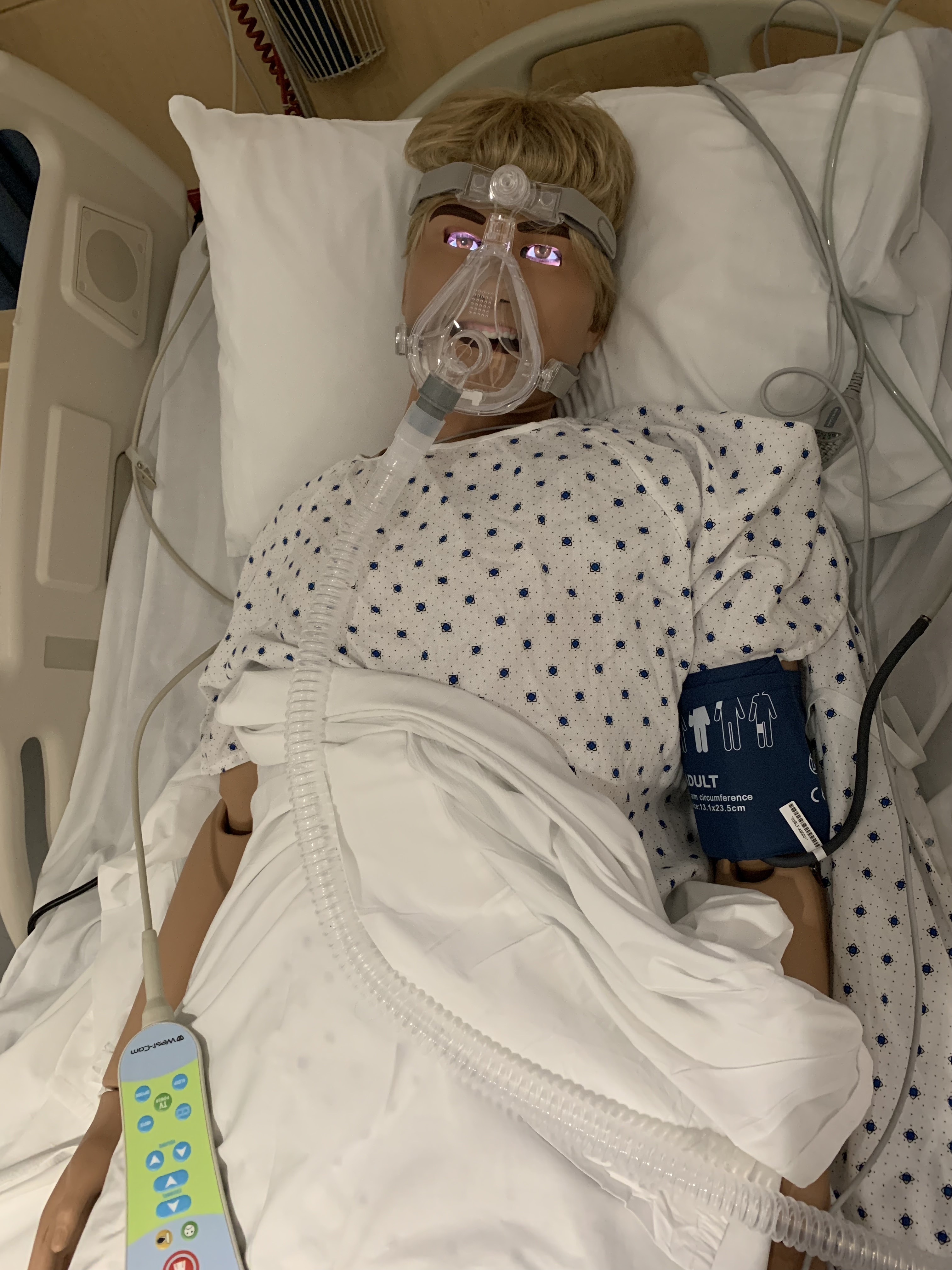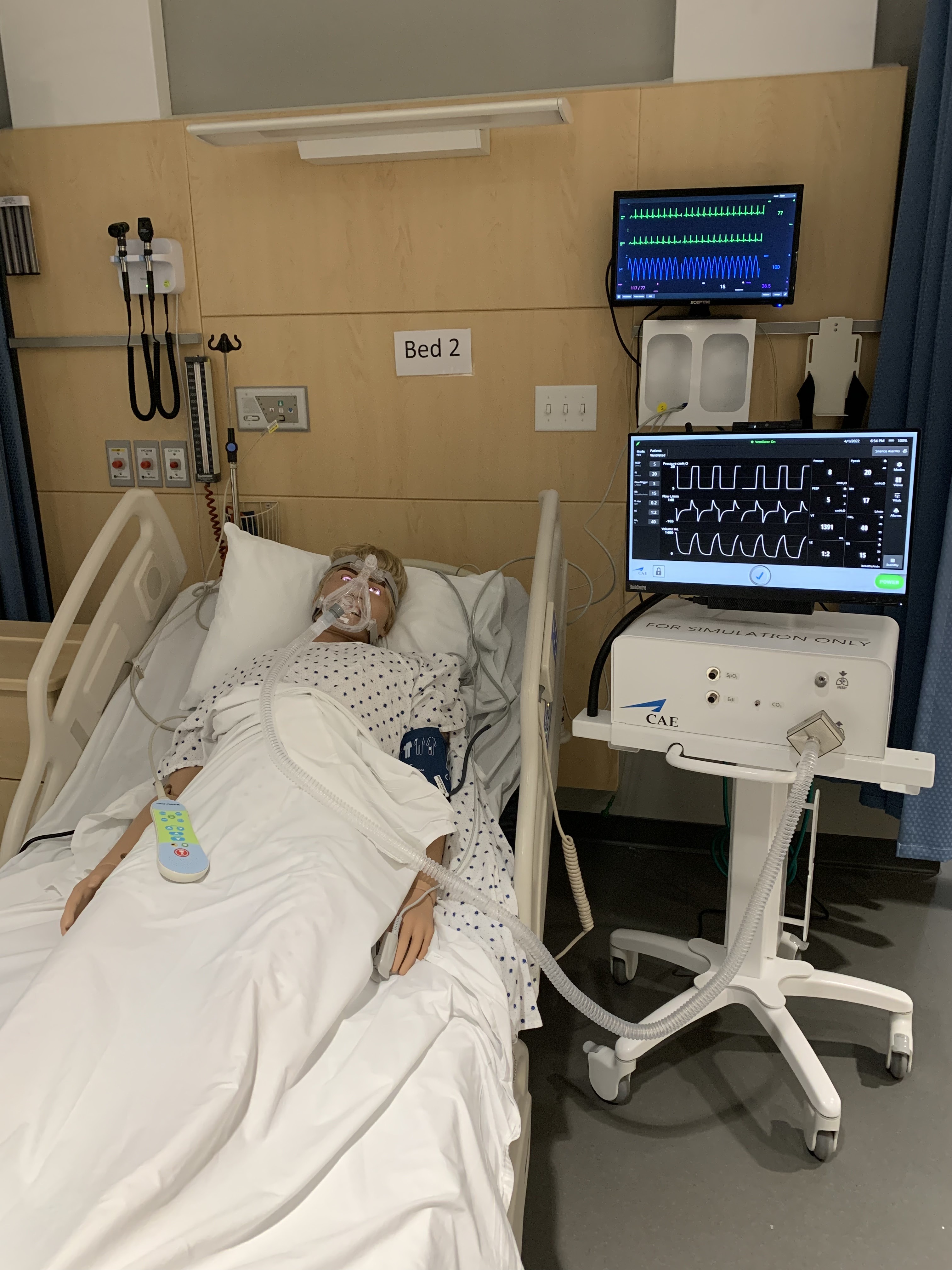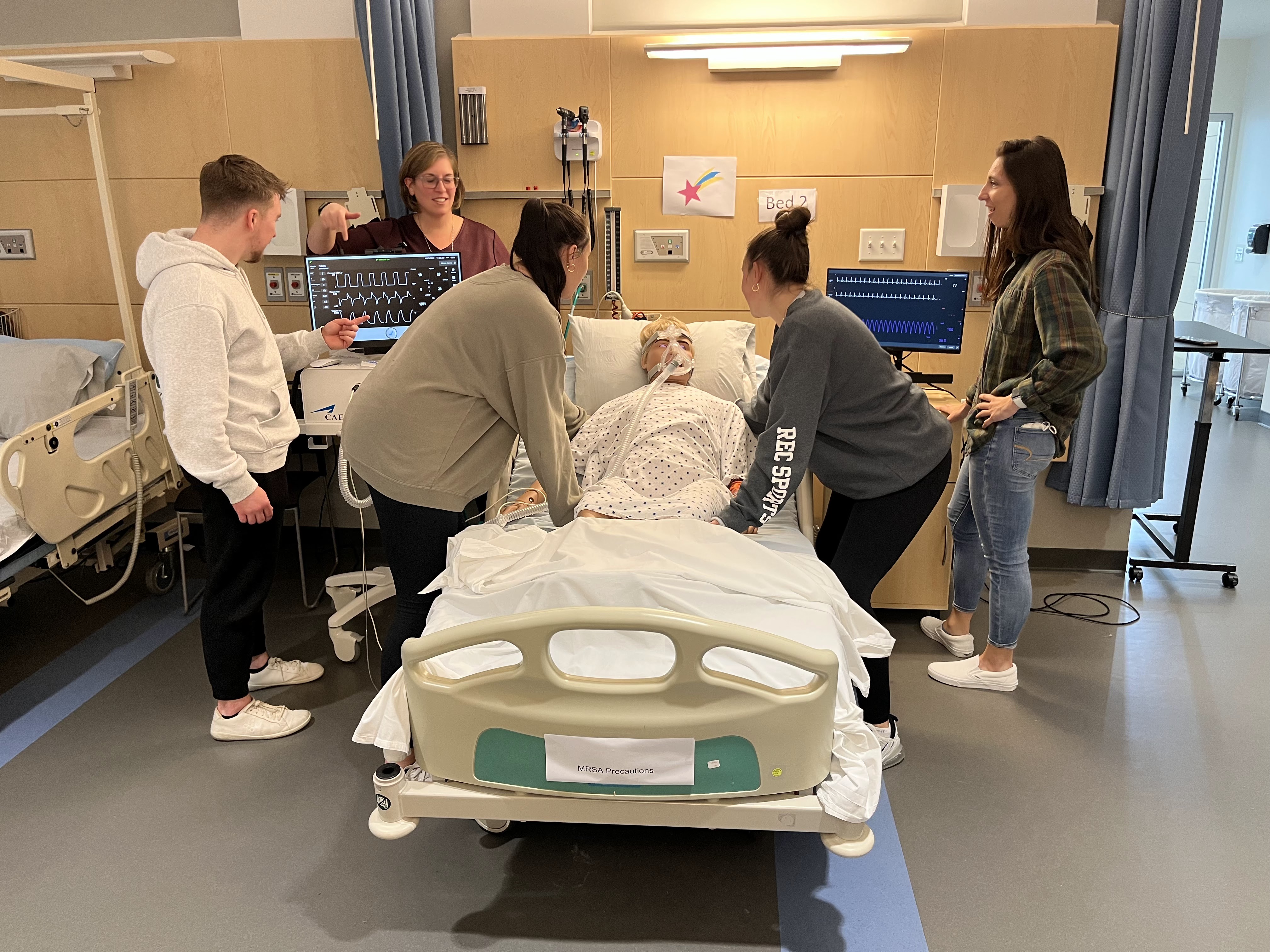Department of Physical Therapy
Contact Us:
- Physical Therapy Department
- Edward Leahy Jr. Hall Room 510
- 237 Jefferson Avenue
- Scranton, PA 18510
- The University of Scranton
- Phone: 570-941-7499
- Fax: 570-941-7940
Simulation in the DPT Curriculum
About Simulation
The Department of Physical Therapy at the University of Scranton is committed to providing students with various modes of teaching and learning to ensure entry level competency prior to graduation. One active learning technique that is used in the DPT curriculum is simulation. Per the Healthcare Simulation Dictionary, 2nd Ed, a simulated-based learning experience is defined as “An array of structured activities that represent actual or potential situations in education and practice. These activities allow participants to develop or enhance their knowledge, skills, and attitudes, or to analyze and respond to realistic situations in a simulated environment.” Simulated-based learning experiences include 3 important components, a pre-briefing, the experience, and a feedback session/debriefing. Types of activities utilized in the curriculum include simulated/standardized patient experiences, task trainers, and high-fidelity manikin simulation.
Simulation in the Department of PT is facilitated by Janette Scardillo, PT, DPT. Dr. Scardillo received her certificate in simulation through Drexel University in January of 2022. Development of simulation within the DPT curriculum was facilitated by Dr. Scardillo through the Provost Office Faculty Development Intersession Grant, as well as The Center for Teaching & Learning Excellence Teaching Enhancement Grant, both awarded in 2022. If you have any questions about simulation in the University of Scranton's Department of PT, please contact Dr. Scardillo at janette.scardillo@scranton.edu.
Simulation in the Curriculum
DPT Year/ Semester |
Course |
Brief Description |
Type of Activity |
Simulated Environment |
|
DPT 1, Spring |
PT 703, Advanced Patient Management |
Subjective interviewing in the acute care setting |
Standardized Patient Simulation with Documentation |
Acute Care |
|
DPT 1, Spring |
PT 703, Advanced Patient Management |
Functional mobility with lines and tubes |
Standardized Patient Simulation with Documentation |
Acute Care |
|
DPT 1, Spring |
PT 703, Advanced Patient Management |
Clinical decision making in acute care |
High-Fideltiy Manikin Simulation with Documentation |
Acute Care |
|
DPT 2, Fall |
PT 741, Cardiovascular and Pulmonary PT |
Heart and lung sounds |
Task-Trainer using Manikin |
n/a |
|
DPT 2, Fall |
PT 741, Cardiovascular and Pulmonary PT |
Telehealth Airway Clearance Devices |
Standardized Patient Simulation with Documentation |
Outpatient Telehealth Pulmonary Rehab |
|
DPT 2, Fall |
PT 741, Cardiovascular and Pulmonary PT |
Functional mobility of the ICU patient |
High-Fidelity Manikin Simulation with Documentation |
Acute Care/Intensive Care Unit |
|
DPT 3, Fall |
PT 722- Rehabilitation for PT II |
Functional mobility with a patient following traumatic brain injury |
Standardized Patient Simulation |
Acute Rehabilitation |
Simulation Equipment
The Department of PT in association with the Panuska College of Professional Studies has purchased equipment to ensure simulation best practices in the physical therapy curriculum. In 2021, the University purchased the Ares manikin, from CAE Healthcare. This manikin was chosen because of its ability to mimic chest rise and fall with breathing, heart and lung sounds, 2-way communication, simulated vital signs, and eye movement. The Ares manikin is also light enough that students are able to perform dependent functional mobility in the simulated environment. This manikin also comes equip with a specialty stethoscope attachment, Stethosym, which allows students to hear lung and heart sounds with the use of RFID technology.


The University additionally purchased the CAE SimEquip Ventilator. This medical equipment simulator can be used to simulate both non-invasive and invasive forms of mechanical ventilation. Students are able to both visualize the settings, see the coordinating chest rise and fall on the manikin, and hear the breathing sounds and alarms in real time. In addition, students are able to problem solve the mobilization of a patient using mechanical ventilation and manipulate the device and tubing in a safe learning environment.
Simulated Documentation
Healthcare providers know that "if you don't document it, it didn't happen".Therefore, to ensure the fidelity of patient care experiences, documentation is an added component to many simulation activities. The Department of PT uses the educational electronic health record system EHRGo to simulate chart reviews and patient encounter documentation. EHRgo allows for faculty to select already created cases within the system or build customized simulated patient records. The University's faculty has worked collaboratively with the EHRgo team to develop templates that can be used in multiple areas of the DPT curriculum including practical exams, integrated clinical experiences, individual assignments, and simulation experiences. Documentation assignments and expectations vary based on the course and activity learning objectives. Current placement of simulated documentation in the curriculum can be found below with additional course activities currently in development.
Documentation in the DPT Curriculum

Simulation Resources
Various resources exist to promote best practices for simulation in healthcare education. If you are interested in learning more about simulation in the University of Scranton's DPT Program, please contact Dr. Janette Scardillo at janette.scardillo@scranton.edu.
Resource Links:
- American Council of Academic Physical Therapy (ACAPT) Simulation Resources
- CAE Healthcare- simulation vendor
- International Nursing Association for Clinical Simulation and Learning(INASCL)
- INASCL Simulation Standards of Best Practices
- Simulation 101 Webinar- from ACAPT
- Society of Simulation in Healthcare
- Society of Simulation in Healthcare Simulation Dictionary






